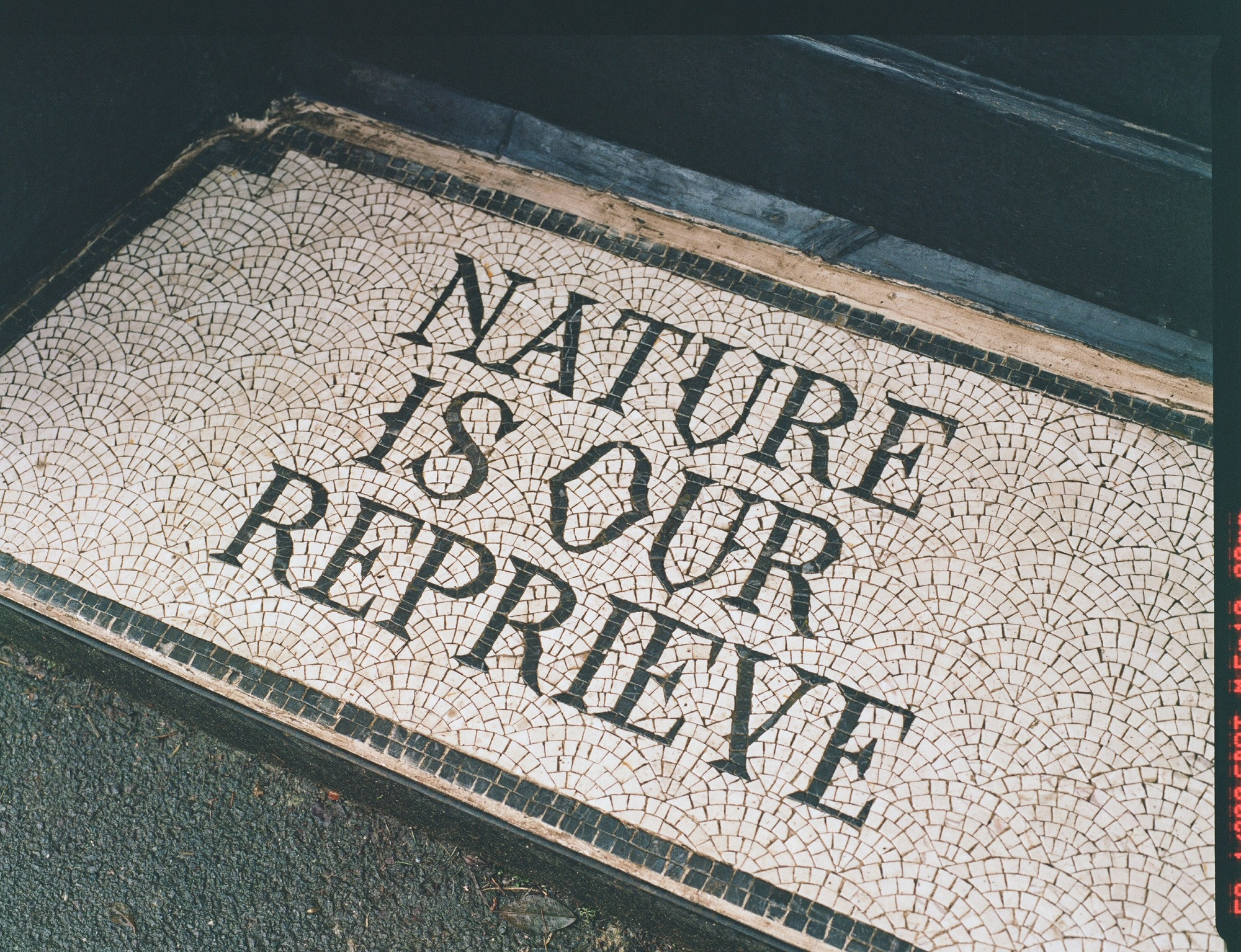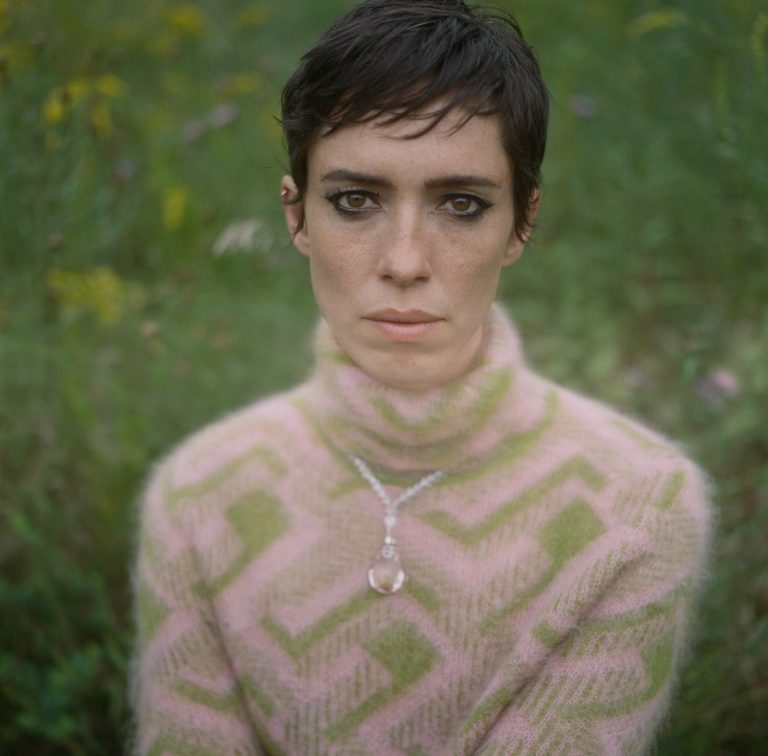
I Am Walking Roots
Published: 2021/12/07
Updated: 2022/05/21
With her directorial debut Passing, an adaptation of a 1929 novel of the same name by Nella Larsen, Rebecca examines her mixed-race identity – and asks when, how and why we choose to claim our heritage and our history.
In conversation for Violet with academic and author Emma Dabiri, Rebecca talks about her choice to make a black and white film in 2021 – and asks if society's drive to categorise, to assign labels, and to deal in binaries, can prove to be the ultimate betrayal of the nuanced, complicated, ever-evolving self.
EMMA DABIRI: Okay. So hi, Rebecca. Congratulations on 'Passing'.
REBECCA HALL: Thank you very much.
A beautiful and actually profoundly affecting movie. I wanted to ask you quite a straightforward question, which you’ve probably answered lots of times before.
Right.
But that’s the nature of these things. I was just curious to know when you were first acquainted with Nella Larsen [author of the novel 'Passing', 1929] and how that awareness of her came about.
Well, it was probably close to 15 years ago. I’m just trying to think. Yeah, maybe somewhere between 13 and 15 years ago.
Wow.
Yeah. It was at a moment in my life where I was increasingly spending more time in America. I think I rented my first apartment in New York in 2008, which sort of dovetailed with Obama getting elected. And I suppose it was this moment of thinking about this country that I was increasingly spending more time in, that my mother was from, having gone from slave state to an apartheid state, to whatever it is now, but probably not the fulfilment of any kind of egalitarian dream quite yet. Well, you can’t spend any time in America without thinking about how the story of enslavement figures so hugely into everything.
And I suppose I increasingly was feeling a sort of responsibility in discovering how that story figured into my own personal history. I had grown up in England, obviously. But I also looked at my mother and assumed that she was Black, although she didn’t... Not didn’t, she couldn’t really speak about it. She didn’t have words; she didn’t have context. Her father left her with a lot of mysteries, and she didn’t really know what she identified as, I think, as a result.
At the time, I suppose I was trying to grapple with all of this. But I didn’t have language for it. I didn’t even know about ‘passing’. I think on some sort of instinctive level I must have understood that that’s what my grandfather was doing, in order to pass onto my mother this vagueness about this aspect of her heritage, and me also—passing that same vagueness onto me. But I didn’t have words for it. The only thing that I did really have was a sort of insistence on talking about it more.
And because I started talking about it more, people started giving me information that became potent. One person in my life, a friend, gave me the book 'Passing'. I read it and instantly had context for what my grandfather must have done. But even more than that, I’d come across this piece of literature that doesn’t end with a description of racial passing. It uses it as a metaphor to bust open a whole myriad of issues around—crudely speaking, when our insides don’t match up with our outsides, and whether the place where the story that you tell about yourself to form your identity and the one that society puts on you, meet—and the bits of your desires, the inconsistencies start to spill out around the edges, which I think is something that everyone can relate to.
I was just so struck by that and struck by this feeling of having some sort of context for compassion for what my grandfather did and the risk that he took in order to, ironically, give me the kind of life that I have. But also, just a different mode of thinking about all of these categories as patently absurd, because that’s really what the book gets to. I think Nella Larsen was grossly misinterpreted at the time. A lot of people assumed 'Passing'—they sort of reduced it to a very simplistic narrative of: Irene is the morally righteous one, and Clare has made a bad choice and she will be punished by it with death.
And that’s not what Nella Larsen is doing at all because she’s weaving this erotic subplot underneath it all. And she’s very subtly informing the audience that actually the person that you’re spending time with, the person who’s walking around saying that they are right all the time, is the one who is increasingly unsafe; as in, she literally breaks things, she’s dangerous, she’s a powder keg. And the other one who’s walking around saying, ‘I’m unsafe, I’m morally reckless,’ is free on some level.
And so the book asks you to look at Irene and start to realise actually which one of these women is betraying themselves more: the one who’s hiding their race or the one who’s hiding everything about themselves? And I suppose in that, the thing that she is critiquing is not passing. It’s rigidity, it’s categories. It’s these sort of binaries of how to be man, woman, gay, straight, good wife, blah blah blah. All these things, these sort of containers that we like to put ourselves in. And so yeah, anyway, what was the question?
Oh, it doesn’t matter! [Laughing.] It doesn’t matter. That was beautiful. I was just nodding and trying to keep my ‘Mm-hmms’ to a minimum and furiously scribbling notes as well. So much that I want to come back to and touch upon what you said. So my careful questions are out the window. So I will start with what you have referred to a couple of times in that answer—this critique or even this rejection of rigidity and categories and binaries, which is something that we are starting to talk about in this kind of moment or in this generation. But we’re still kind of far from—our world is still completely polarised and organised according to these binaries. I guess we’re seeing more resistance to them around gender and sexuality, but probably not much resistance to them around race. The categories of black and white remain pretty—
—And it’s so… I mean, I read that Barbara Fields book, 'Racecraft [: The Soul of Inequality in American Life]' and I was—
Oh, brilliant.
I’m kind of into that stuff. [Laughs.]
A woman after my own heart.
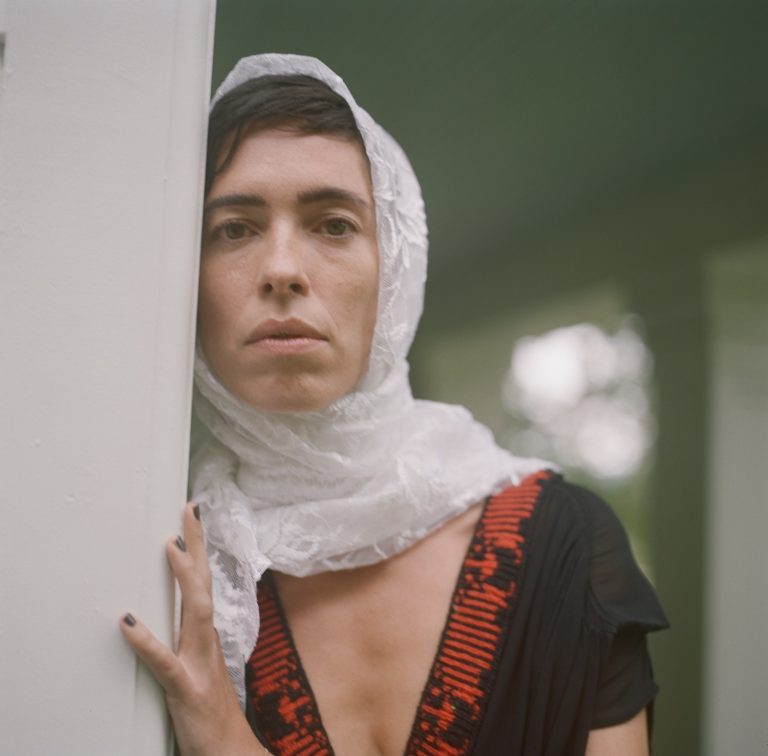
All clothing PRADA.
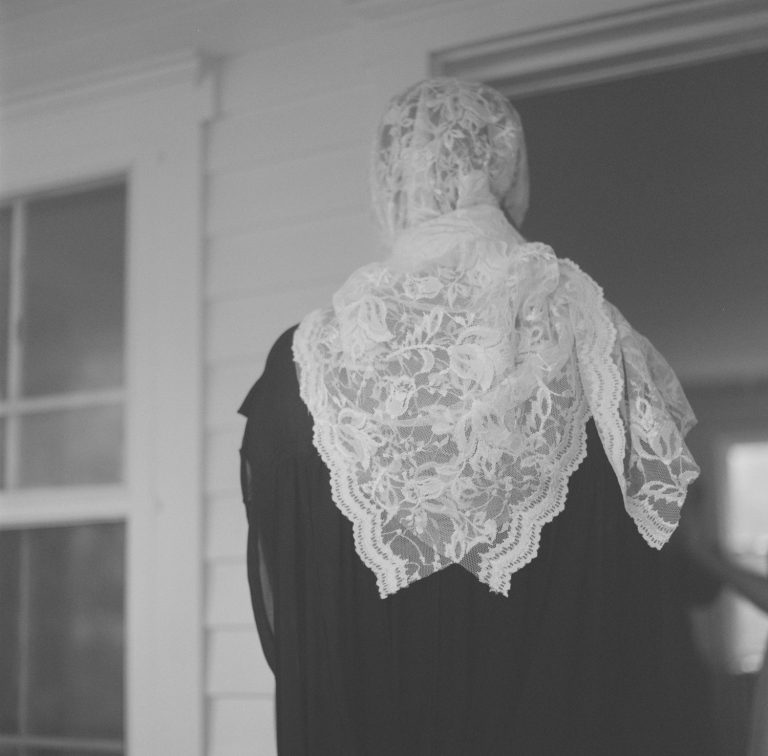
All clothing PRADA.
But it’s something that I think about in relation to this story, weirdly. And I get it. On some level, I understand why this moment of racial politics is so heightened to this place where there’s only really room for you to distinguish who’s the good guy and who’s the bad guy, because when it comes to allocation of resources and people’s lives, it kind of has to be that way on some level.
But it feels like my job as an artist to explore the other thing, the nuance, the grey areas. And ironically, that’s one of the reasons why I decided to shoot it in black and white, because it draws attention to the categories and the distinctions, but also highlights the absurdity, because black and white film isn’t even black and white; it’s grey. And neither are we all black and white. That’s just the translation that our eye goes through that is constructed by society. And it’s a similar sort of process, that I think black and white film sort of heightens and calls attention to.
And similarly, it was very important for me to cast Black actors in the movie. I mean, there’s another obvious reason, which is that there’s a history of movies about racial passing in Hollywood, like 'Imitation of Life' [1959] and 'Pinky' [1949], the Elia Kazan film, and a couple of others. There’s a few, actually. But they’re nearly all performed by white actors. So it feels very important to point out that if we’re willing to accept white actors as Black, we should be willing to accept people that we define as Black as white.
But also, I always think about the first scene in the movie ['Passing'] when the... Not the first scene, but one of those early scenes in the hotel room with John and the two women sitting there. And it always occurred to me that it would be much more interesting to watch that scene if you were watching two actors that the world accepted as Black and didn’t really think of as being capable of passing or however you want to put it, because then... And I think that you were able to accept that partially because it is black and white film. So there’s an element of abstraction and expressionism already happening.
But also, it allows for this thing of the white man, who has the power in this world, sees what he wants to see… It’s not about someone who can pass. It’s just about context and him ascribing what he wants to. And he wants to, in that moment, he believes that both those women are white, so they are white. And I always thought that was more potent than someone who obviously looked white.
Yeah! I’m so glad that you brought that up. That was one of my questions. And I was thinking about those earlier films about passing that exist. The first one, 'Imitation of Life'—where later films about passing cast white women, it is actually a woman of African descent, Fredi Washington, in 'Imitation of Life'.
Right. Fredi Washington. Yeah.
Yeah. But she’s somebody that had blue eyes, had relatively straight hair. Her complexion was pale. But she could actually physically pass as white in a way that I think Ruth Negga and Tessa Thompson would generally pass through the world racialised as Black.
Well, they are. They are. That’s how they are perceived. So yeah, exactly what you’re saying.
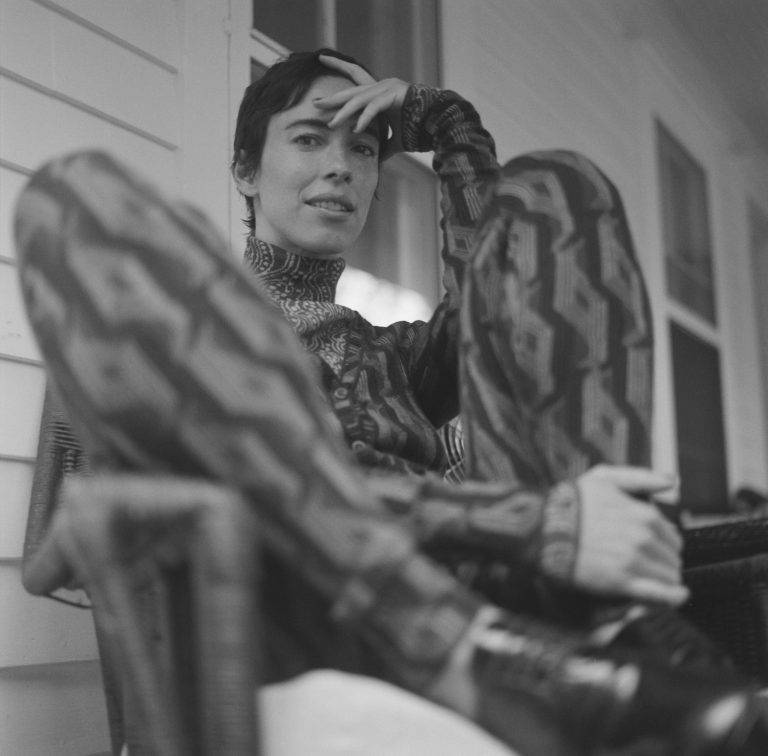
All clothing PRADA.
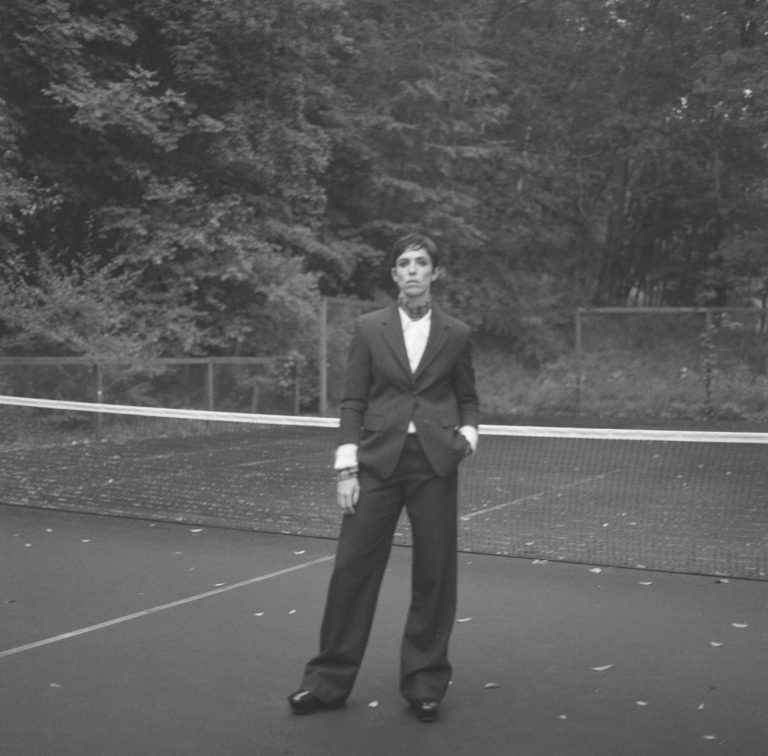
All clothing PRADA.
So I was really curious about... I thought it must be intentional, but I wanted to ask you about it.
No, I mean aside from the fact that they’re both perfect for the... I wanted to cast the best actors regardless of what they looked like.
Yeah, yeah, yeah. But I think the optics of visually referencing passing are tricky when you bring it to the screen.
Oh yeah.
When you move it from literature to the screen—it’s like, who do you cast?
Yeah. And this was my argument when I was trying to get financing for the movie. It was incredibly difficult to get it made black and white. People kept saying to me, ‘Oh, we’ll give you all the money that you need to make it reasonably if you make it in colour.’ And I kept saying, ‘But it won’t work in colour.’
Oh, interesting.
The only way to make a film about colour, in my mind, is to take all the colour out of it and put it in this abstract realm where you are forced to confront the sort of arbitrariness of these categories and these ways of perceiving. And if you put it in this symbolic world, you’re constantly thinking about who is ascribing who with what at any given moment, according to context, according to... And also, there’s tricks that you can do in black and white. Like the first scene in the hotel, I very purposely made the walls very white, everything very white, it’s all very blown out. And it’s sort of as if John’s sort of whiteness is just kind of all over it. [Laughs.] That’s a terrible way of putting it.
Oh, that’s awesome. That’s very cool.
But it was so tricky to get that through to the financiers because they kept just thinking that I wanted it to be black and white for gimmicky reasons.
Or because of the historical period solely.
Yeah. Or because of the historical period, I wanted it to look like a museum piece. And I was like, ‘No, it’s not going to feel that way. I promise you; it’s not going to feel that way. The sound design is going to be very modern and very different and all that, to counteract that. And it’s not about making a museum. It’s not about nostalgia. It’s not about it looking pretty, although it will look pretty. But that’s also... It’s about the film itself passing. It’s integral to the story. It’s integral to every aspect of this, and it just won’t work if it’s not black and white.’ So I ended up having to make it with far less money than I would have liked to have made it. But that was the way it was.
But that’s also fascinating that there was so much resistance to you making it in black and white and that was something that you sacrificed some of the finances for.
No, I know. And it’s funny because there’s so many movies out this year that are in black and white. It just does make me giggle slightly. Like, what exactly was the problem? I suppose there was old thinking that television stations wouldn’t buy movies to play on cable television because there’s some statistic that people flicking through channels, if they see something in black and white, they assume that something’s wrong with their television.
Oh wow.
Whether or not that’s actually true, I don’t know. But there’s lots of insane reasons. And I suspect also if I wasn’t a first-time film-maker, I suspect it might have been easier. I mean, it was a lot to ask people. I was an unknown quantity. I was rather arrogantly asking for a very stylised situation. I was like, ‘I want to make a film in black and white, in 4:3 aspect ratio, with little to no scoring, about a very controversial subject matter,’ so… [Laughs.]
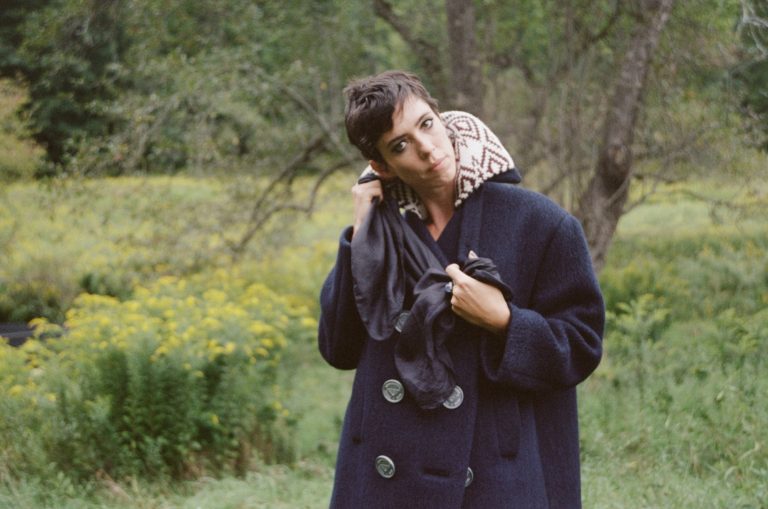
All clothing PRADA, ring CARTIER.
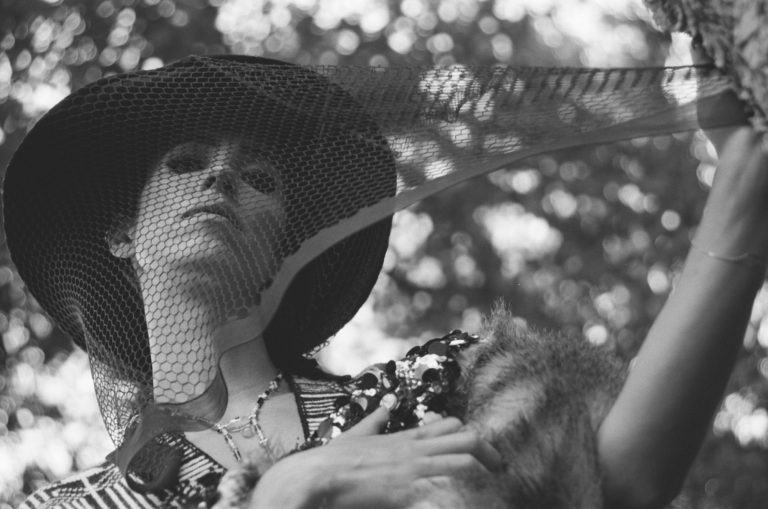
All clothing PRADA, necklace CARTIER.
When you put it like that! Could you tell me a little bit about the rationale behind the 4:3 aspect ratio? Why was that a stylistic choice that you wanted?
Well, there were a couple of things. There was a slight sort of referencing-slash-wish-fulfilment, cinematic wish-fulfilment on my part, in that the films that I loved as a kid, which I think have slightly been overlooked in film history… I mean, not really, a little bit I guess because they’re melodrama. But there was this patch of movie-making in Hollywood that really did focus on interpersonal relationships between two women. It was often films with Barbara Stanwyk and Bette Davis. And those films actually taught me a lot about... I mean, loving them as a child gave me an understanding of movie-making that I think was a little off-kilter.
I sort of grew up believing that it was possible to centre a movie on two women and that the relationships could be complex and nuanced, and they could be a bit rough around the edges personally, and that movie-making didn’t have to reflect reality per se. Because those films were black and white and often quite formally innovative in terms of the shots and all these kinds of things. So they didn’t have to reflect a reality, but they did have to reflect an emotional truth, even in the realm of melodrama, even in this sort of heightened reality.
I just felt that this book slotted into that, in a weird way. And there was a little bit of me that was very angry that it was written 93 years ago and that someone didn’t make it five years after publication because it should’ve been in that canon of movies. It should have existed then. So, the 4:3 is a little bit of an homage to that. But it’s also more specifically to do with the size of the frame. That’s an obvious thing to say; of course it’s to do with the size of the frame. But to make a frame skinnier and squarer forces the face to be in the centre. There’s nothing on the peripheries of the shot, often. And if there are two people in the shot, which I often wanted there very purposefully to be—often when it comes to Clare and Irene, I wanted both of them to be in the shot—there’s not much room for anything else. So that it’s very confrontational in a way.
And I think because it forces the face into the centre of the frame, it also sort of telegraphs that this is a film about faces, about how people project their face to the outside world, their person to the outside world, and how we project stuff onto them by looking at them, what we think of them, what we make of them. And it’s constraining, again. I’m using that word ‘constraining’, but that is the theme in many ways.
I mean the 4:3 literally constrains these people into the frame. And that would occasionally be quite challenging for my actors because it would be like, ‘I know you want to go over there and take a sip of coffee or whatever it is that you want to do. But if you move two inches to the left, then you’re going to be out of the frame. You’ve got to stand actually... You’re stuck, you’re constrained inside this tiny frame, and that’s the way it has to be for this film to work.’ But they all understood that, and at times the shots would be quite rigidly choreographed because of that feeling. And they understood that and went with it, thank goodness.
It’s so fascinating to hear the technical decisions that I wouldn’t know about that are informing the film and that create the atmosphere of the film. To hear about the process is fascinating. I want to come back to constraint, but before I do, I also want to... Bette Davis. When I was watching Ruth [Negga], I was getting real iconic, kind of like, 1940s Hollywood, star of—I know it was the 1920s, but Hollywood starlet. And I was thinking Bette Davis all the time throughout it.
Oh, that’s so great.
And it’s amazing to hear that she was, her presence—
Channelling that. No, I mean it was funny. We all knew that the film was set in the 1920s, but I really kept contextualising the movie in film language in the 1940s, weirdly.
Oh, I’m spot on. Yay.
You are spot on.
Yeah, I thought they were really iconic performances from Ruth and from Tessa. Both were just really magnetic and compelling. Constraint—really interesting to hear you talk about that in the context of technical decisions because it’s also something that comes through so clearly in the character of Irene. And I wanted to ask you—and you mentioned this in your first answer—the contrasts and parallels between Irene and Clare. And I wanted to ask you about respectability politics and how respectability politics informed Black bourgeoisie life in that time and how Clare... Sorry. No, how Irene fits into all of that.
Yeah. I mean, I think that’s really the key. I think in many ways, Nella Larsen is critiquing the limitations of that or the occasional, not always, but occasional hypocrisy involved in that. This is a woman—Irene is a woman who gets the money for the NAACP [The National Association for the Advancement of Colored People] fundraiser but can’t talk to her children about race. Racism, rather. And she preaches that she’s doing the right thing all the time, and yet, she is pretty unhappy. And she’s furious with Clare for doing the wrong thing and being free and living.
In a way, Clare is this kind of duality incarnate. She walks through the world making of herself what she wants to make of herself. At any given moment, she is what she needs to be—whether it’s gay, straight, black, white, man, woman. I mean, she behaves in all of the traditional ways that we think of those categories. She behaves in all of those ways at any given moment. And as a result, she is... I mean, of course her actions contain this seed of danger that she might get found out everywhere she goes. But essentially, she is happy. And essentially, she is living her truth on some level. And yes, of course it might be selfish at times. It might, like I said, contain the seed of danger.
But her presence in Irene’s life, which is really what the story’s about, is enormously destabilising, because suddenly Irene is like, well, all of these things that I thought were the correct way to be, she’s not doing that, and I’m in love with her.
And I’m in love with her. Wow. That’s the crux of it, isn’t it?
It is.
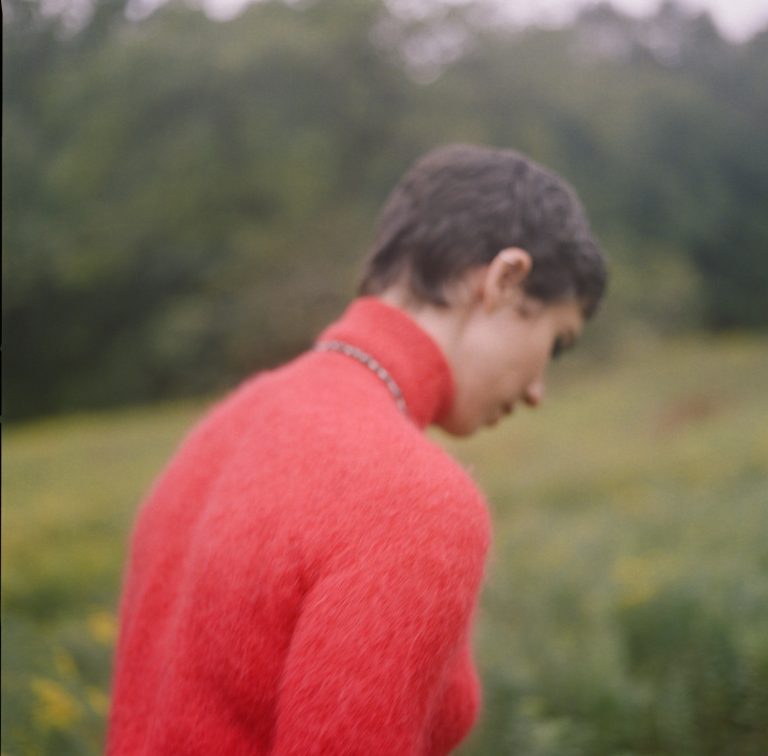
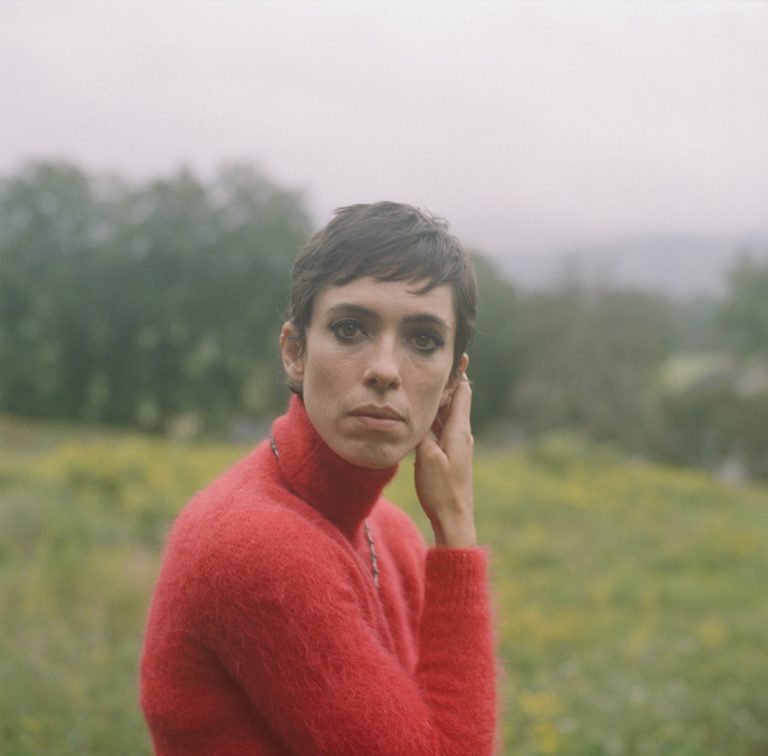
All clothing PRADA, necklace and ring CARTIER.
Because that’s really alluded to a number of times. It’s rather explicit.
Here’s this person who’s free and how the hell am I meant to carry on living my very carefully constructed life.
Repressed kind of life.
When this person comes in and just explodes everything with her behaviour... I mean, there is definitely an erotic subtext. And I think that Irene projects the affair onto her husband as a way of deferring talking about her own sexual attraction to Clare. And Clare is, I don’t want to say classic narcissist. That’s much more derogatory than I would like to be because I love Clare. But she’s this classic... She shines her light on someone, and you just want to be in that sunshine. When she looks at Irene, it’s suddenly like Irene’s life is, oh, okay, everything’s fine. But then she shines it on someone else and your world falls apart. She’s a very destabilising presence.
And it was such a complicated balance to strike, constantly thinking about the ways in which their differences and similarities repel and attract one another, and keeping this subtext of longing, because that’s what it really is. I mean, I talk about sexual attraction and erotics, but actually it’s kind of an erotics of longing, really, because that’s what Clare is too. I mean, Clare’s story is a longing for something that she’s left behind, this deep, deep, deep longing for... But she comes back and she takes it.
And Irene is just longing for everything and has no idea who she is. And so it’s really… This desire becomes the thing. The point where your convictions don’t match up with your desires is the danger zone. It’s like Irene’s actual desires don’t match up with all of her prim, repressed, correct ways of being. And that’s the problem.
And then also, I think it’s interesting because Irene kind of flirts with passing as well, doesn’t she?
Oh yeah.
She wants to go to a department store, or she wants to go to a certain bar.
Oh yeah. She thinks she’s doing it out of necessity, and she has no other option, but she totally does, and she knows she can.
And her friend, her relationship with Bill Camp’s character [Hugh], who is kind of loosely modelled on a Harlem Renaissance guy called Carl Van Vechten.
I know him well. [Laughs.]
Yes, I’m sure you do. Yeah. Controversial character. But anyway, that relationship I think is really fascinating, that she has this whole... I sort of crammed it all into the dance scene. And I also added a cheeky line that isn’t Nella Larsen about, ‘We’re all of us passing for something or other.’ But it just felt true to her spirit and one of those—you have to spell it out slightly. But I think that’s very fascinating, her relationship to him and the sort of enjoyment that she takes out of being his sort of chosen one. Yeah. What was I saying? I was about to say something else. What was it? It’ll come back to me in a minute.
About longing, was it? That was the general theme.
Yeah. Well, longing was the... I mean, that’s really, that was the sort of word that we kept, longing and constraint. Two things in opposition for all of them. Irene for all the reasons I said. Clare for the obvious reasons that she’s... It’s more superficial in a sense, like a choice that she’s made constrains her and she longs to come back. But the pain of all that. There was a lot of sideways glances and ‘how can we shoot this like a love story’ and how can we keep that longing fresh and that desire and the yearning for something being the sort of fabric of the movie and the tone of the movie.
Was this a history that you felt compelled—or perhaps even a sense of, on some level, responsibility, maybe—to share or create around, given your own family background?
Yeah. I don’t really know how to articulate it. I mean, I do know how to articulate it. I made a movie. That’s how I do it. I don’t think I’m... That’s the best way I know how to articulate. But I do—it struck a chord with me. I mean, it’s worth noting that Nella Larsen was a bit of an outsider. She was raised by a Danish mother and spent a lot of time in Europe. And I think a lot of her relationship to her own Americanness, as well as Blackness, was she approached it as something of an outsider. And I think that the sort of sense of ‘where do I fit in’ has always been something that I think about a lot.
And also, as someone who’s been a public person for many years, you spend a lot of time noticing how people want you to fit in, and what they say about you, and how that sort of dictates your identity. The story you tell about yourself and then the one that other people tell about you. [Laughs.] It all becomes a bit, ‘Huh’?
Everyone thinks of me in England as being Peter Hall’s daughter and English rose-type, born into this cultural elite and yada yada. And I’m like, that’s not my full story either. My mother’s a Ewing. I’m a Hall; I’m also a Ewing. And that name comes from the farmer who owned my great-great-grandmother as a slave. So there’s a whole other story. I’m this walking illustration of the uncategorisation... [Laughs.] What’s the word I’m looking for? The impossibility of these categories. There’s so much more to all of us than meets the eye. And that is something that I’m interested in.
It goes back to this thing we were talking about earlier, about that racial politics right now is incredibly fraught and there are good guys and bad guys. But in art, it’s the grey area. It’s where we can explore how narrow the categories [are that] we use to circumscribe messy humanity. They can constrain the fullest possible expression of us. And that is something that I’ve always been interested in as an artist, is not living in the black and white, is living in the nuanced areas, living in the more complicated areas.
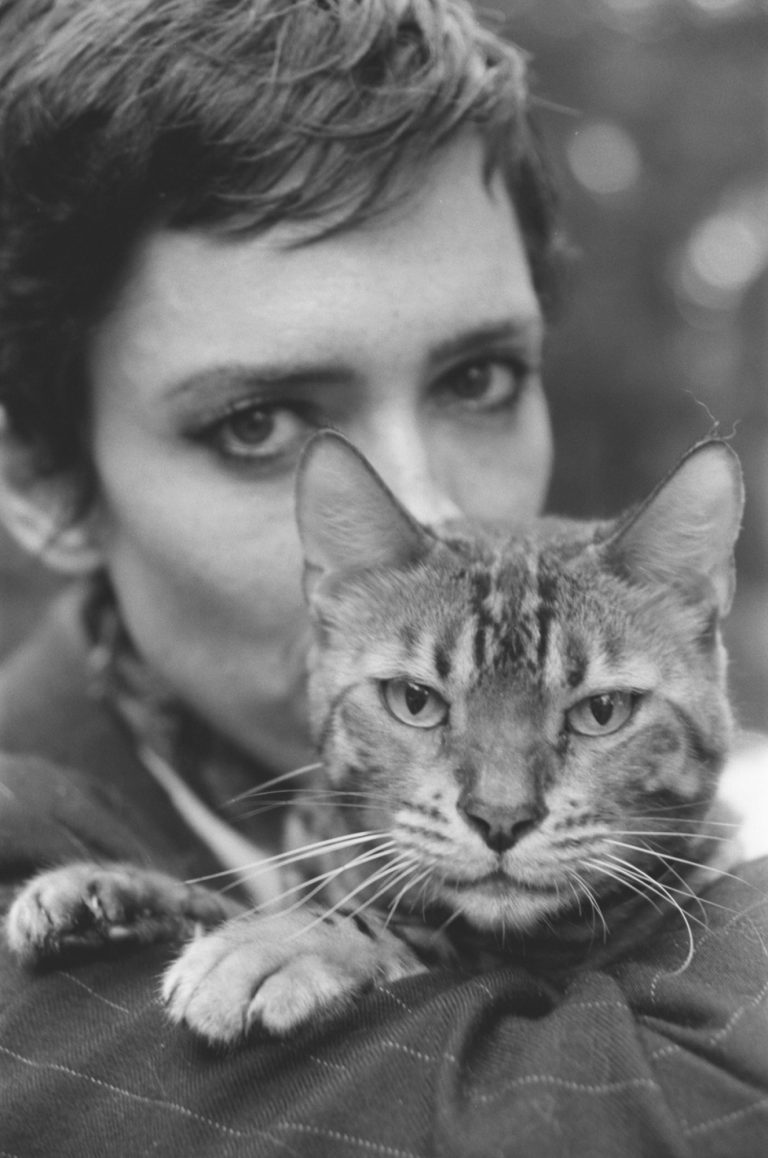
All clothing PRADA.
Yeah. And as you’ve been saying, that’s something that applies to so many people, it’s just particularly potent when it comes to black and white.
Particularly potent. No, I mean, it’s true, of so many people. As it pertains to race. It also happens to be true of me, which is why this story felt like something that I had to do so strongly, I think.
And according to the ‘one-drop rule’ [a social and legal principle of racial classification in the twentieth century in the United States, which asserted that any person with even one ancestor of Black ancestry is considered Black], somebody like yourself would have been passing.
Absolutely.
As white.
Yeah. I think about this a lot because if you are a child in a family with a legacy of passing, it’s like, what is the legacy of a life lived in hiding? What does that do to a family? What gets passed down? And in many ways, the choice to pass becomes internalised as something that does get passed down, for want of a better word. I keep saying ‘passed’ too much, but you know what I’m saying.
In a strange way, I am and have been. And I can’t choose how I present, but I can choose to honour my heritage and talk about it through making art like this. And that feels like an important thing for me to do in terms of my family’s history.
Absolutely. And I read in an interview, or I read material with you where you were saying that the legacy of this history and decisions that were made by your family, even if you hadn’t been explicitly always aware of them, had an impact on the dynamic of the family.
Of course.
And the social relations. Of course, as they would. Would you be able to expand on that at all?
Well, it’s a complicated one to expand on without getting too much into other people’s stories.
Of course.
I would rather not speak on their behalf. But it’s more just dynamics that you see in a family, that you explain away as being more or less psychological, suddenly take on another dimension when you think about—
The context.
The context. Exactly.
Yeah. I know exactly what you mean. Or things in your family that you think are just idiosyncratic things in your family, and then you actually put them in a particular sociopolitical context—
Sociopolitical context, and you’re like, oh. [Laughs.]
You’re like, oh, wow. Yeah. Totally get it. And so, did you say that growing up, you did always perceive your mother as being of African descent?
I did, yeah. I did. I did. And at a certain point—I don’t even know where I got it from. It was more like, I don’t even know whether someone said something to me, I don’t think my mother did. I mean, at a certain point she did say something to me. But it was always very... At one point, she’d be like, ‘Yes, I think my father was Black. I think we’re probably Black.’ And then another day it would be, ‘It could be Native American, I don’t really know. It could be Indigenous; I don’t really know. It could be...’ I mean, something like that. I mean he was very strongly attached to those cultures, too. In fact, his first wife was Indigenous. And he had a son with her. And I now know—I did that show 'Finding Your Roots' recently and I happen to know that he—
Oh wow.
He did actually pass for Indigenous as well as white at various different points in his life, which is another whole can of worms.
But quite common.
Quite common. Oh yes.
Quite common.
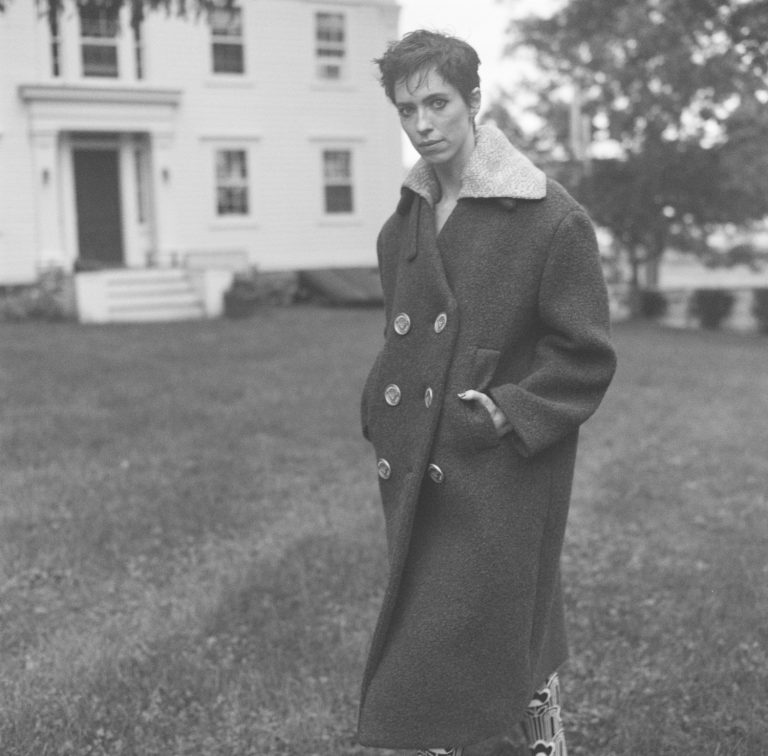
All clothing PRADA.
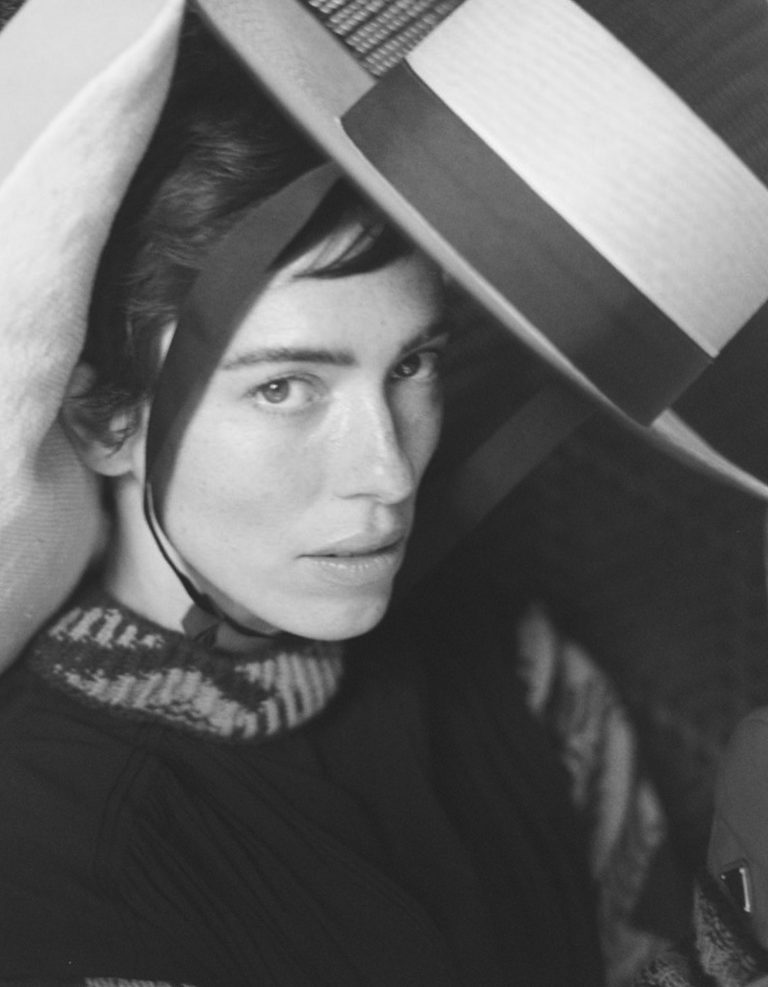
All clothing PRADA.
So, I suppose it was a combination of snippets of information here and there and just looking at my mother. She looked to me—well, I mean, I grew up in the English countryside, private boarding school, [and] when she came to do school pickup, she was super American and super glamorous and often dressed entirely in black with big sunglasses and red lipstick. So she didn’t exactly fit in anyway.
Blend in.
It was with all the Barbours and Range Rovers that would be found at those kinds of institutions. But I always perceived her as being African American.
And would that have been something—I’m curious. I’m not going to ask you personal details about your family or anything, but a lot of accounts of passing that I have read, when descendants ask, potentially their parent who’s passing or their grandparent who is passing, when they ask them about hair texture or complexion or certain features, an honest answer, or the truth, or… Truth is so subjective. Let me see, how do I... The fact of the African ancestry that those features, hair texture, complexion, or whatever, are a result of… is denied, and another story is given. And often, those truths are protected. They are denied because so much is riding on that truth not being revealed. So in your family, is it something that would have been denied and met with, ‘We don’t talk about that?’ Or was it something that was more openly discussed?
My mother was willing to talk about it, she just didn’t know. And the older I got, she did tell me some stories, which would imply that she did know more, or she at least had experiences that were quite straightforwardly racist. And I mean, directly racist to her growing up. But yes, I think there’s times that I talked to my mother about it and I would say to her, ‘What do you think that you identify as?’ And she would say, ‘Oh, I’m a musician.’
And a part of me gets that. A part of me applauds that and says, ‘Yes, absolutely, let’s be done with this.’ But another part of me is like, there’s a real nuance between denial and accepting and moving on or something. I don’t know. [Laughs.] You know what I’m getting at?
Absolutely. Yeah.
And when I did the 'Finding Your Roots' show and really had context for my whole heritage on my mother’s side, which, by the way, happens to be... The show’s not out yet, so I’m doing spoilers.
Is this 'Who Do You Think You Are?'
Yeah. It’s basically the American 'Who Do You Think You Are?'
Ah. Fantastic.
It’s a long story, but I’ve been wanting to go on it for a long time. And people often ask me, ‘Why on earth did you do it on TV and not just pay someone to do it privately?’ And it’s like, well, because so much of this has been hidden, it felt quite important that I need to do it on TV, is the sort of short answer.
But just sitting there and hearing—I mean, I look so white and so a little bit of you is like, well, maybe it was one relative or two, something like that. But then to actually sit down and break it down and look at the history and understand that the reason I look white is because of my Dutch grandmother and the first slave owner who presumably raped my great-grandmother, great-great-grandmother. And that’s it. Obviously, on my father’s side... I’m just talking about on my mother’s side. It forces me to hold that a little bit. Like it’s not... I feel like I’m skirting around some James Baldwin quote I’m not going to remember right. But it’s—
Is it about categorisation?
Yeah, probably.
Is it: ‘Our passion for categorisation…’
Yep! That’s my favourite one.
…life neatly fitted into pegs’?
Yeah. Yeah. That one.
I mean, I know it all by heart.
It’s my favourite one. In fact, I just wrote it down yesterday because I was thinking about using it in this speech for the intro of the film, funnily enough.
Oh my god. It’s the opening quote in my most recent book.
Ah! Okay. Like minds. Like minds.
Very much so.
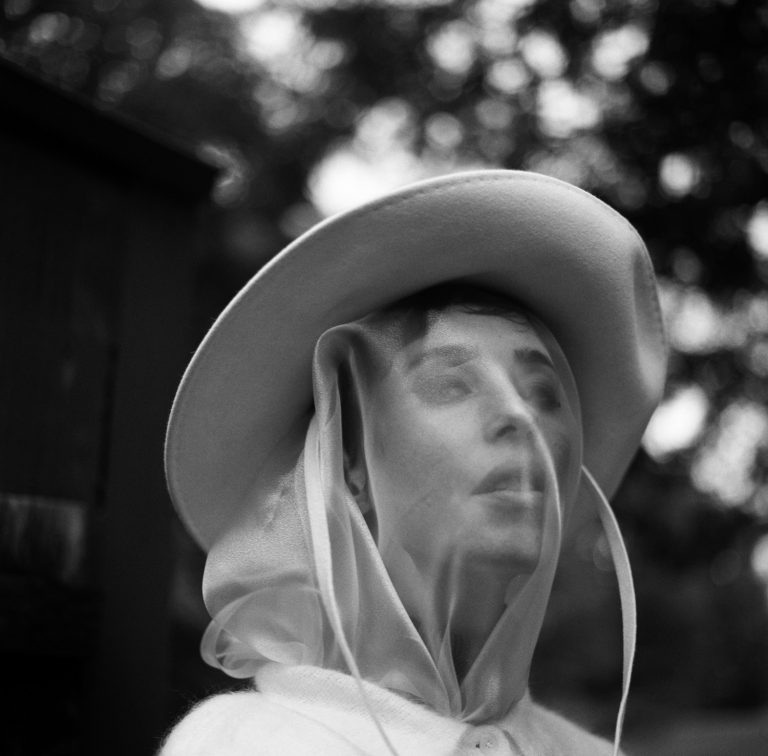
All clothing PRADA.
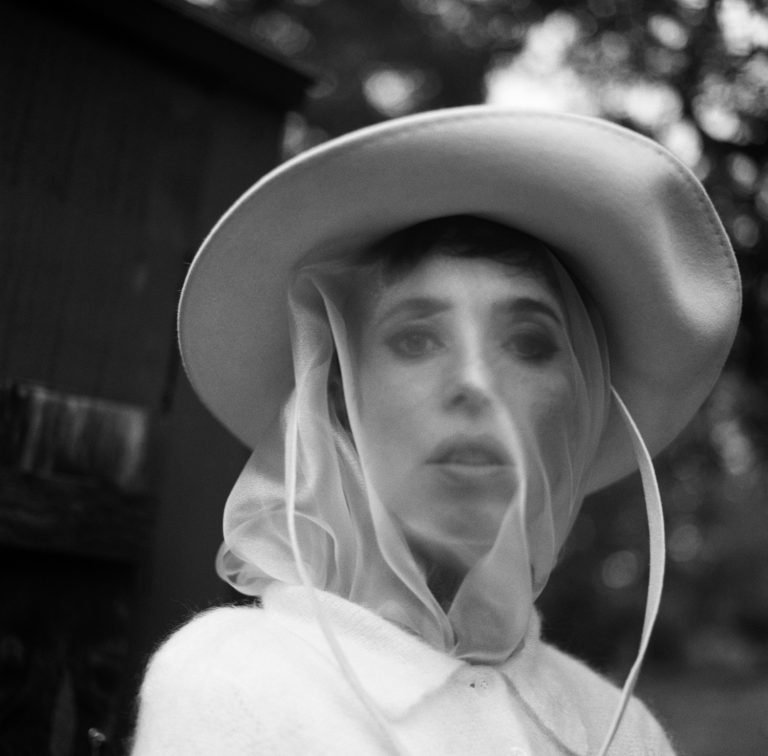
Yeah. But I suppose that when I found out all that stuff, I thought a lot about this thing, conversations with my mother that felt like it was, ‘Well, it’s in the past now, so we don’t have to worry about it. And anyway, you look white, so what’s the big deal?’ It’s not that she said that, but there is almost, that’s the denial piece. And then there’s also the ‘how about we embrace all of it and talk about it’ piece, which feels very important to me.
Yeah. Absolutely. So I’m just seeing what the time is. Okay. We have four more minutes.
Anyway, complicated stuff to get into. I mean, we could go on about this stuff for hours.
Yeah. I want to continue a bit, but I’m just making sure there’s nothing else that I’m missing out on. I could really talk to you about it for absolutely hours. Related to that, I think also it’s important disrupting these rigid categories and these ideas about racial ‘purity’. And I read you in an interview essentially saying that you... I think someone asked you if you identified as Black, and you laughed and said that you were the quintessentially English, middle class, white woman. But then this is also your heritage and your history too.
And that particular interview I feel kind of embarrassed about because I think it’s been taken out of context. It was quite a long time ago.
Yeah. It was like 2010 or something. So ages ago.
Yeah. And it was a time when I was really actually grappling with this stuff and did not know how to talk about it. And funnily enough, every time I raised it with a group of white people, they would laugh at me and find it hilarious.
Interesting.
Which I found to be troubling and complicated. And it was almost like I was being shamed out of owning any of it, which I’ve gotten over. But I don’t think of... I mean, I know that I present to the world as white.
Oh, you appear as that rather than—
I appear as that.
Yes, yeah, yeah.
It’s not what I identify [as]... I mean I don’t—
There’s a distinction…
Yeah, there’s a distinction. So in that sense, I am passing, whether or not by my own volition. [Laughs.] In that sense, I am. But I think of my own identity as much more complicated than that. I know I look that way. But I think of it as much more different. I was raised by someone who had different experiences because of how she looked, who was raised by someone who had very different experiences because of how he looked. And on and on. And that has an effect on your upbringing.
Yeah. Do you think that story is something you’ll explore in future work? Have you read any Danzy Senna, by the way?
No, I haven’t.
Oh, I think you would absolutely adore—
I’m going to write it down.
Danzy Senna. 'Caucasia' is her incredible novel. And she’s written lots of short stories as well. She is African American. She very much identifies as a black woman. She could pass as white. She would probably move through the world racialised as white. I was actually surprised when I saw her appearance though, having read lots of her books. I expected her to look like me actually because her insight was such that I thought we would probably... Yeah, anyway, I think that you would absolutely adore her work.
Thank you.
You’re most welcome. And sorry, I jumped across the last question I was asking you—do you think you’ll explore more of your biography in future works?
Yeah. Absolutely. I mean, I don’t know how yet. But it’s definitely—it’s a large part of me. And this is really my first step in coming out in that way, I suppose. [Laughs.]
I actually was recently reading that Obama’s white mother—‘white mother’; I mean, she’s a white woman, but she descended from one of the first enslaved Africans brought to America in the 1600s.
Really? There you go.
Yeah.
It’s more common than we all... It’s everywhere.
It’s more common than our categories can accommodate.
Exactly. Exactly. That’s very brilliantly put.
I think I have had all my time with you. So thank you so much for this interview.
Thank you. It was really great talking to you.
I enjoyed it thoroughly.
Thank you. Good luck with the piece. Thank you.
Thank you so much. And thank you for the film. So important and beautiful and profound. Thank you.
My pleasure. Thank you.
Related Articles

Liberty 150 x150 curated by Leith Clark: The Founder Interviews

Liberty 150 x150 curated by Leith Clark: The Founder Interviews

Liberty 150 x150 curated by Leith Clark: The Founder Interviews

Liberty 150 x150 curated by Leith Clark: The Founder Interviews
